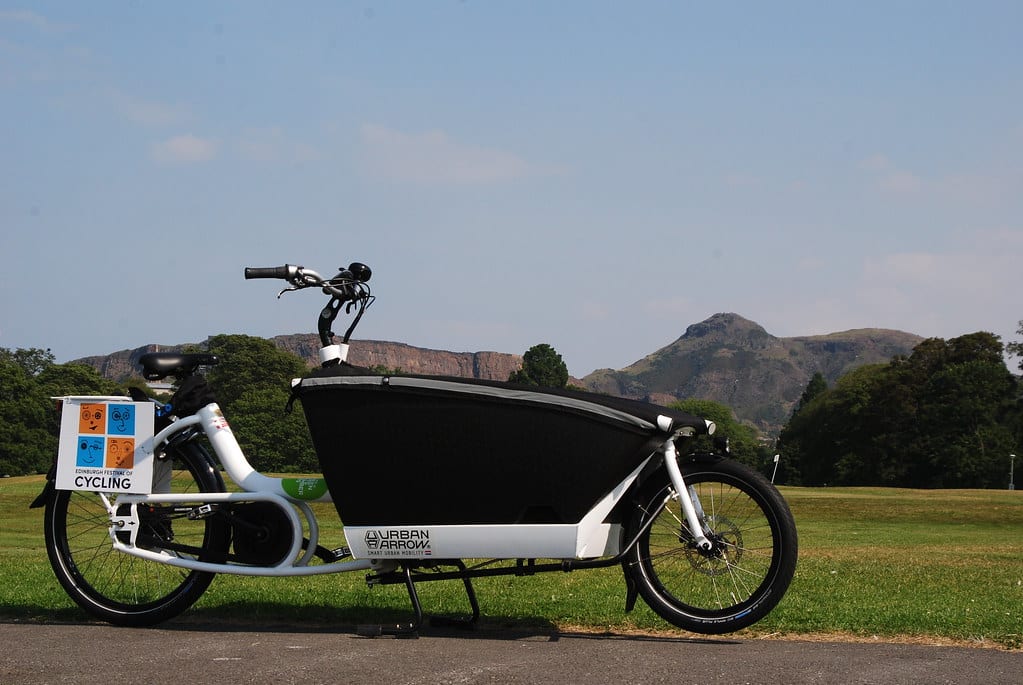E-cargo bikes are becoming increasingly popular as a sustainable and practical mode of transportation. They are designed to carry heavy loads, making them ideal for those who need to transport groceries, children, or other bulky items without relying on a car. With the rise of e-bikes, e-cargo bikes have also become electrified, making them easier to ride and more efficient.
One of the most significant advantages of e-cargo bikes is their versatility. They can be used for a variety of purposes, from running errands to commuting to work. They are also environmentally friendly, emitting zero emissions and helping to reduce traffic congestion. In addition, they are often more affordable than cars, making them a cost-effective alternative for those who want to save money on transportation.
If you are considering purchasing an e-cargo bike, there are several factors to consider. These include the size and weight of the bike, the type of cargo you will be carrying, and the terrain you will be riding on. It is also important to consider the battery life and range of the bike, as well as the level of assistance provided by the electric motor. With the right e-cargo bike, you can enjoy a sustainable and practical mode of transportation that meets your unique needs.
Table of Contents
The Rise of E-Cargo Bikes
Defining the E-Cargo Bike
An e-cargo bike is a type of cargo bike that is equipped with an electric motor that assists the rider. The motor is usually powered by a rechargeable battery and can assist up to a certain speed, after which the rider must pedal on their own. E-cargo bikes come in a variety of shapes and sizes, with some models capable of carrying up to 400 pounds (181 kgs) of cargo.
Essential Features of E-Cargo Bikes
Battery and Motor Specifications
The battery and motor are the heart of an e-cargo bike. The battery provides power to the motor, which in turn assists the rider. When choosing an e-cargo bike, it is important to consider the battery and motor specifications.
The battery capacity is measured in watt-hours (Wh) and determines the range of the bike. The higher the watt-hour rating, the longer the range of the bike. The motor power is measured in watts (W) and determines how much assistance the motor can provide to the rider. The higher the watt rating, the more powerful the motor.
Here’s an overview of the battery capacity and motor power specifications for some of the most popular e-cargo bike models sold in 2023:
- Specialized Globe Haul LT
- Rad Power Bikes RadWagon 4
- Tern HSD P5i
- Velotric Packer 1
- Urban Arrow Cargo
- Motor: Bosch 250W 63Nm mid-drive
- Battery: 500Wh
- Urban Arrow Family Cargo Line
- Motor: Bosch Cargo Line
- Battery: PowerPack 500
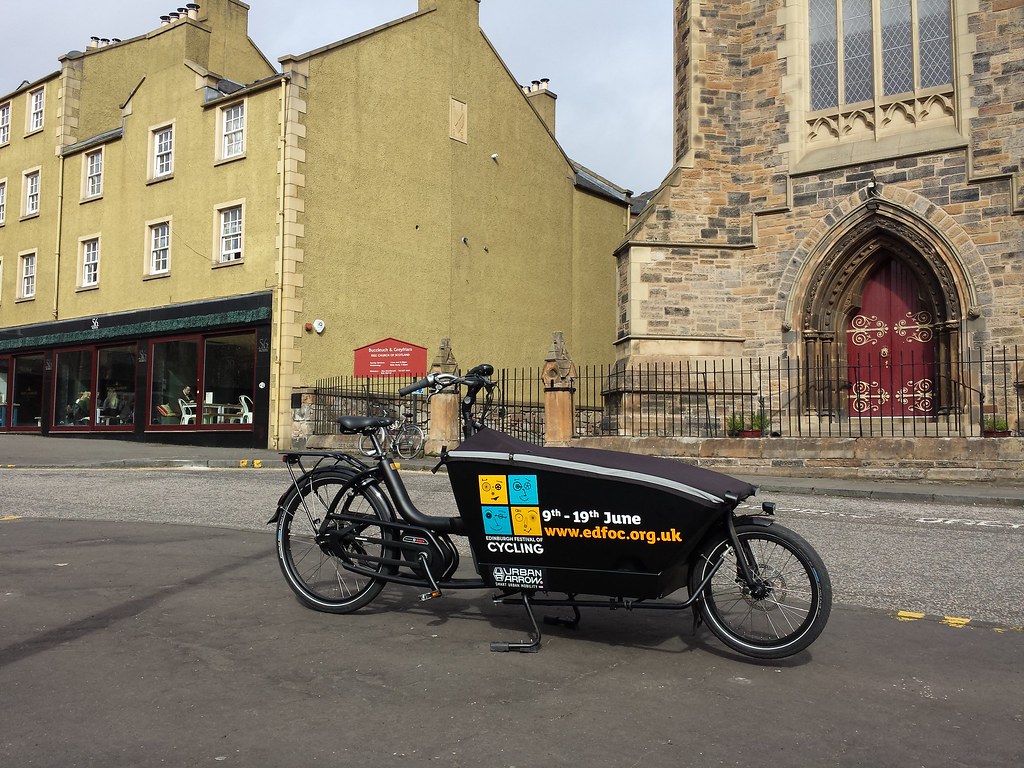
Before purchasing an e-cargo bike, it’s crucial to consult local laws and regulations regarding the use of such bikes. In some areas, specific types of e-bikes, particularly those with higher power motors or speeds exceeding certain limits, may require a special type of authorization or a license to operate legally on public roads. For more detailed information, consult our article on E-Bike Laws Worldwide, which provides an extensive overview of regulations in various regions.
Carrying Capacity and Cargo Space
One of the most important features of an e-cargo bike is its carrying capacity and cargo space. E-cargo bikes are designed to carry heavy loads, so it is important to choose a bike that can handle the weight of your usual cargo.
The carrying capacity of an e-cargo bike is measured in pounds or kilograms and determines how much weight the bike can carry. The cargo space is measured in cubic feet or square meters and determines how much space is available for your cargo.
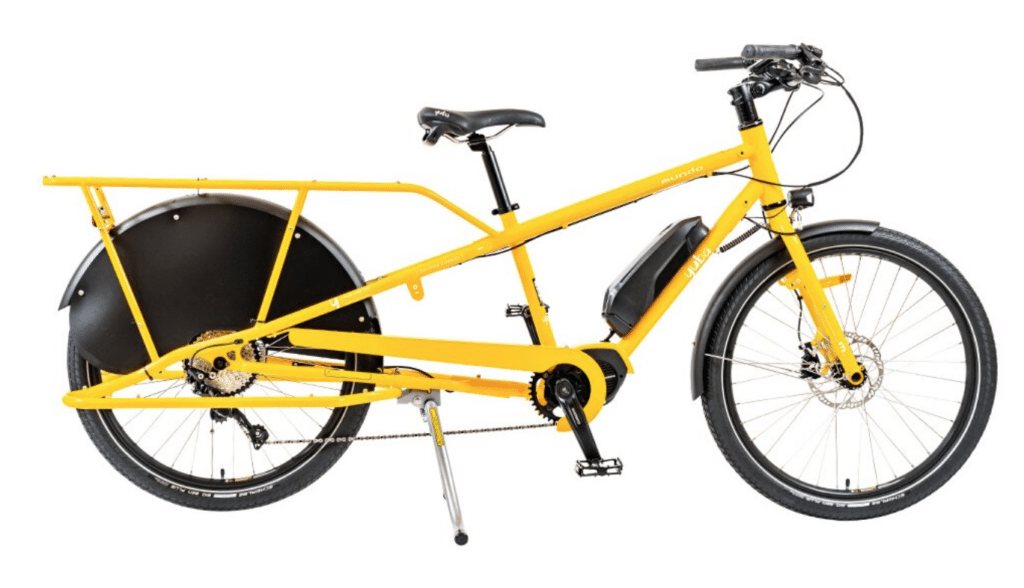
The e-cargo bike that is allowed to carry the heaviest load is the Yuba Mundo EP8. This bike is capable of carrying up to 550 lbs, which is significantly higher than the carrying capacity of other popular e-cargo bikes on the market. Here are some of the e-cargo bikes with the highest carrying capacities for comparison:
- Yuba Mundo EP8: Carries up to 550 lbs (250 kgs)
- Lectric XPedition: Carries up to 450 lbs (204 kgs)
- Tern GSD S10 and Aventon Abound: Each carries up to 440 lbs (200 kgs)
- Blix Packa Genie: Carries up to 400 lbs (181 kgs)
- Tern HSD P9: Carries up to 374 lbs (170 kgs)
- Rad Power Bikes RadWagon 4: Carries up to 350 lbs (159 kgs)
Safety and Handling
Safety and handling are also important features of an e-cargo bike. E-cargo bikes are heavier than traditional bikes, so it is important to choose a bike that is stable and easy to handle.
The stability of an e-cargo bike is determined by its (1) wheelbase and the (2) position of the cargo. A longer wheelbase provides more stability, while a higher cargo position can make the bike less stable.
The handling of an e-cargo bike is determined by its torque and speed. A higher torque provides more power and makes it easier to climb hills, while a higher speed makes it easier to travel long distances. It is important to choose a bike that is easy to handle and provides a comfortable ride.
Types of E-Cargo Bikes
E-cargo bikes come in different types, each designed to serve specific purposes. In this section, we will discuss two main types of e-cargo bikes: Longtail and Front Loader Models, and Specialized Designs for Specific Needs.
Longtail and Front Loader Models
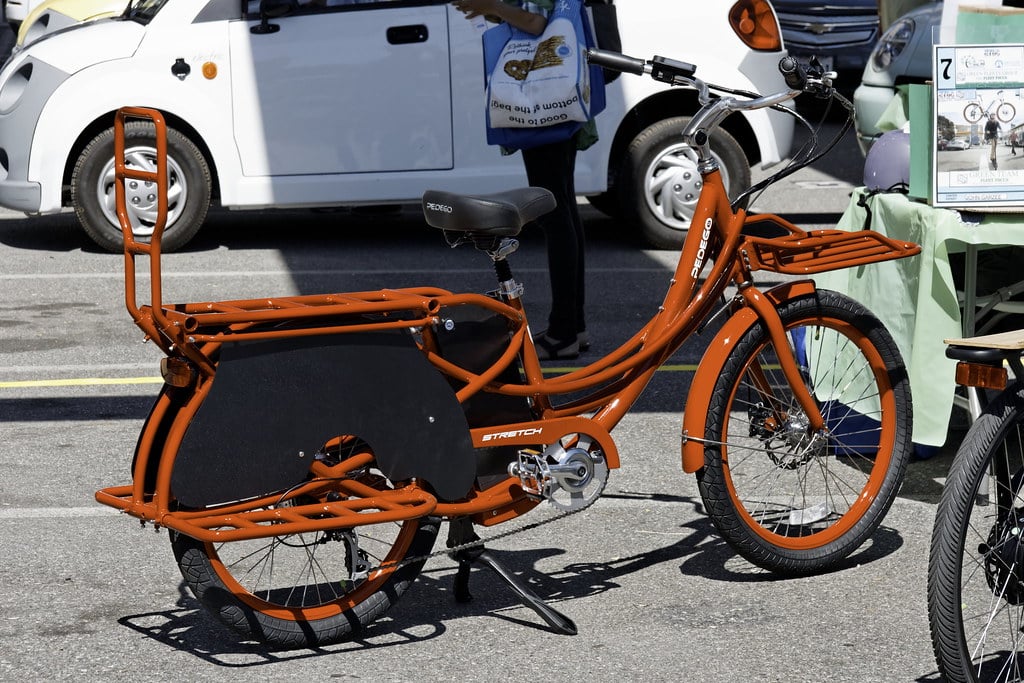
Longtail cargo bikes have a longer wheelbase than regular bikes and are designed to carry cargo on the rear rack. They have a cargo capacity of up to 400 pounds (181.4 Kg), making them ideal for carrying large loads. Some popular longtail cargo bike models include the Tern GSD and the Yuba Spicy Curry.
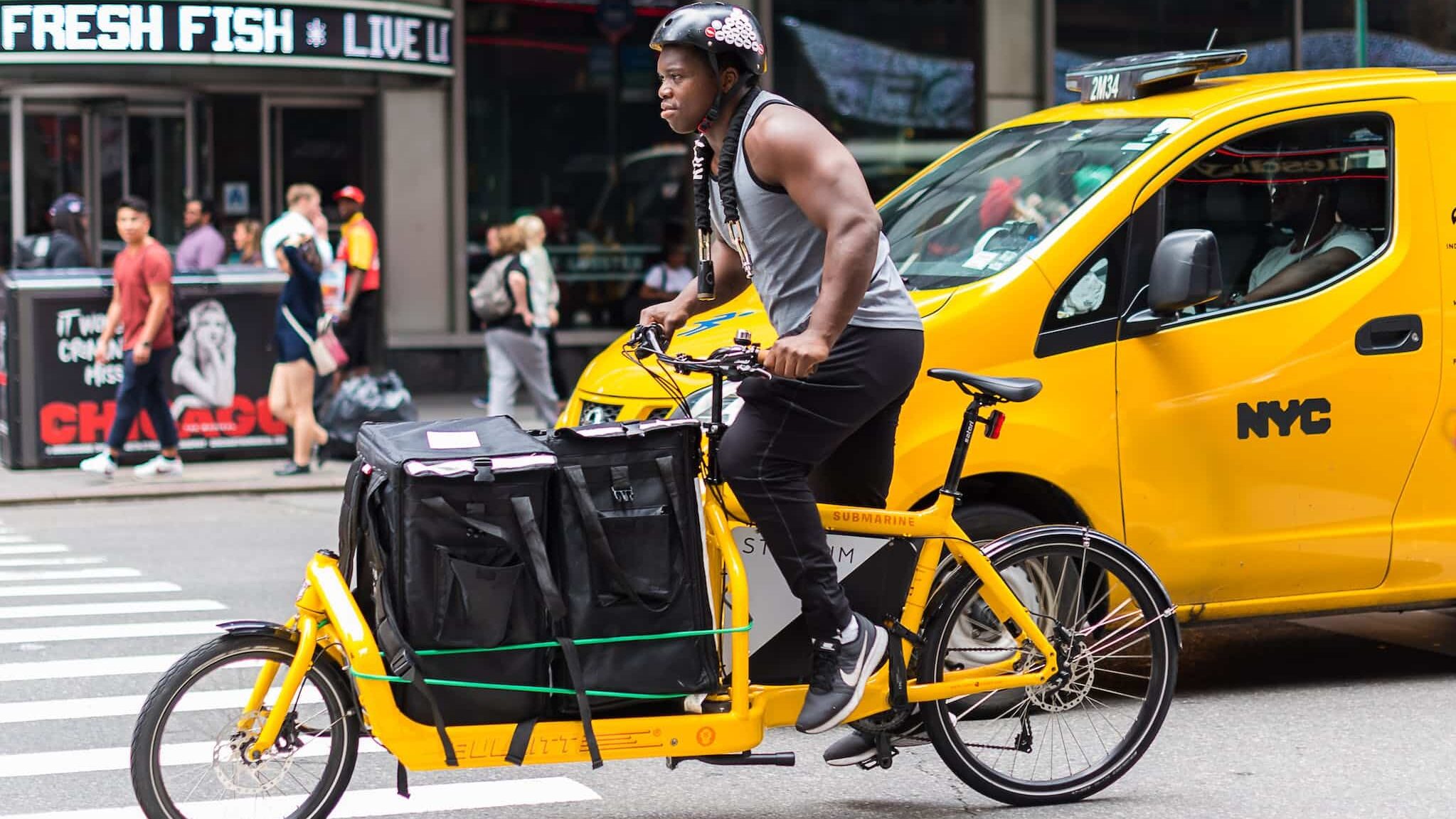
Front loader cargo bikes, on the other hand, have the cargo area in front of the rider. They are ideal for carrying large or bulky items such as furniture, groceries, and kids. Bakfiets and Urban Arrow are popular brands that specializes in front-loader cargo bikes.
Both longtail and front-loader cargo bikes have electric motor systems that provide pedal assistance to the rider, making it easier to carry heavy loads.
Special Designs for Specific Needs
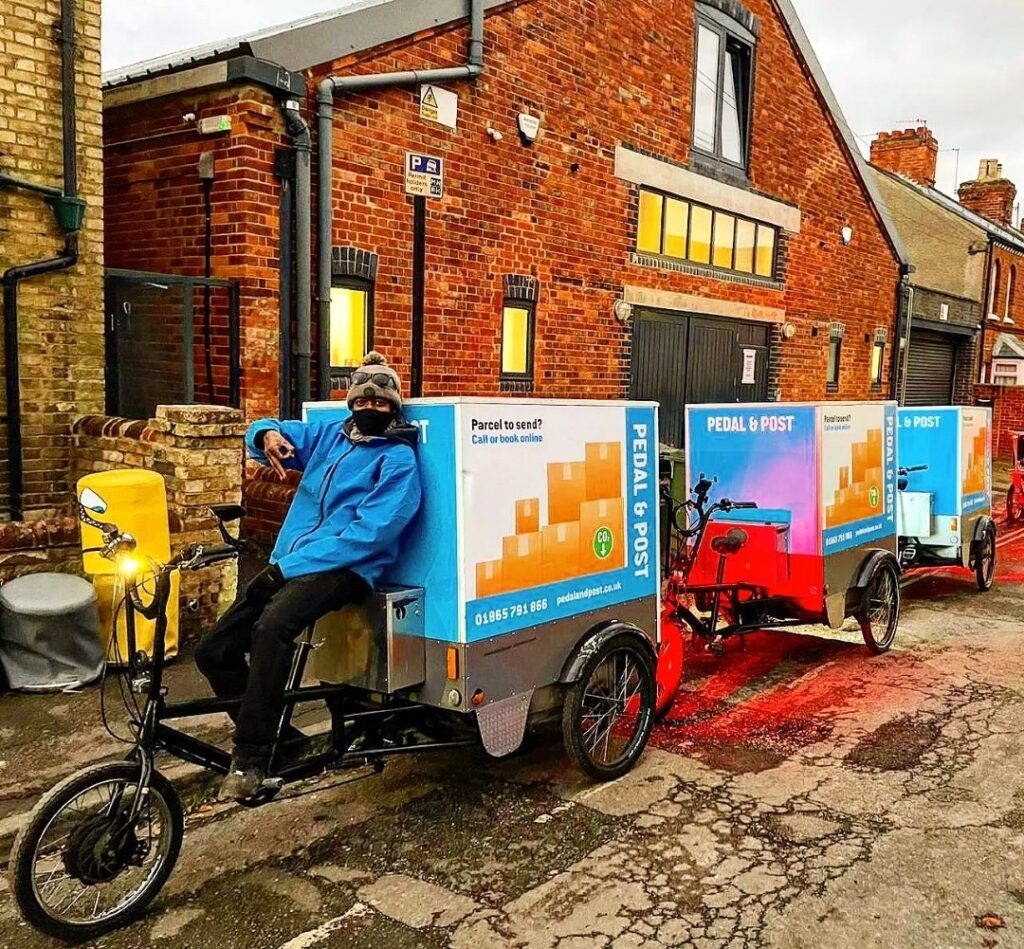
E-cargo bikes are not just for personal use; they’re revolutionizing the way we think about commercial deliveries, too. With the rise of eco-friendly courier services, specialized e-cargo bikes are being designed to meet the unique demands of urban parcel and post distribution. For instance, Pedal and Post in Oxford uses customized e-cargo bikes, crafted by Iceni Cycles, to navigate the city streets smoothly and making commercial deliveries efficiently. These bikes are perfect for delivering letters and small packages.
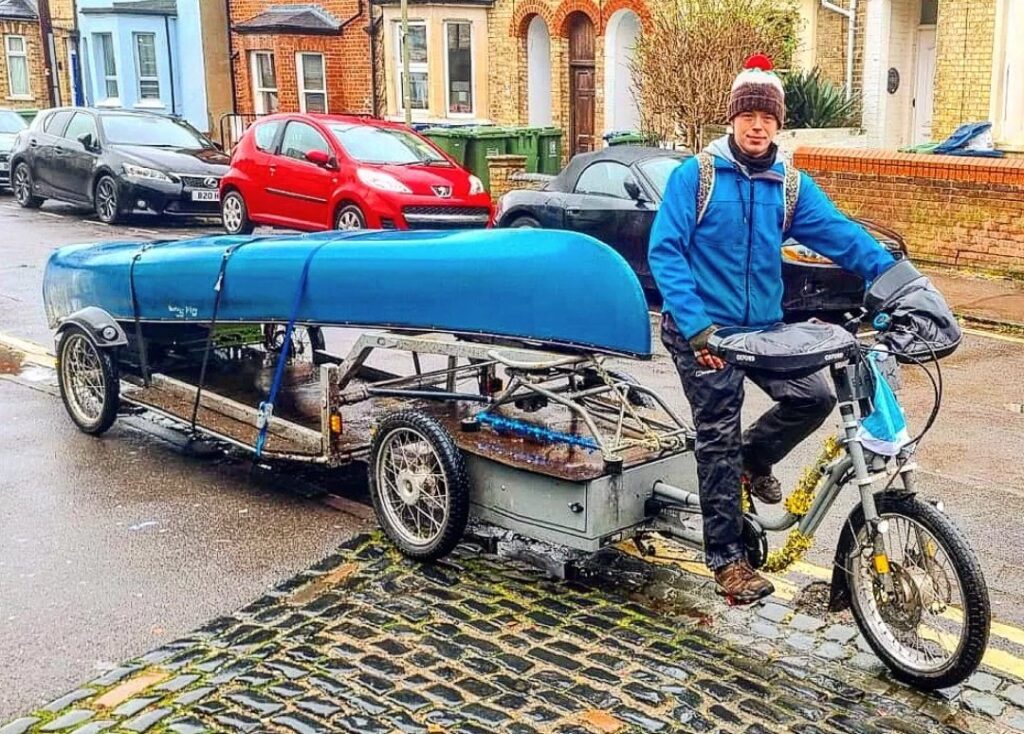
With some creativity, Pedal and Post can also handle larger, bulkier items, such as canoes.
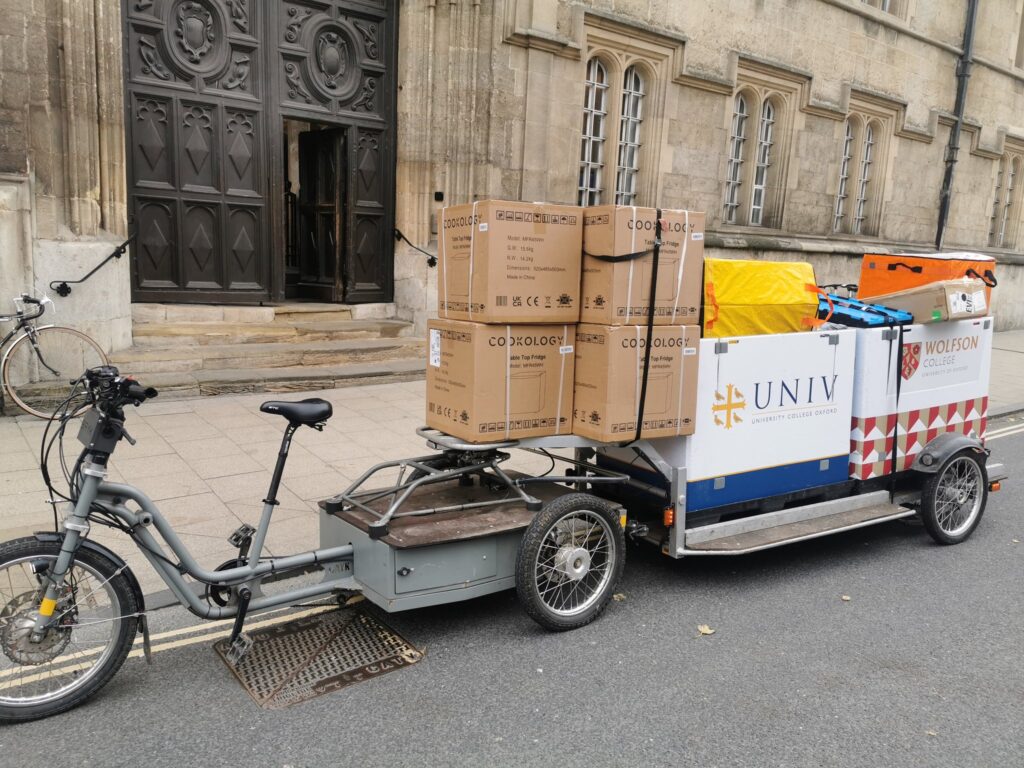
Or such as fridges—well, mini-fridges. But the point is, they can remove 8-12 van movements from the city with just a single cargo bike movement.
This shift to e-cargo bikes for commercial use highlights their versatility and the growing trend towards more sustainable urban delivery solutions.
Advantages of E-Cargo Bikes Over Cars
E-cargo bikes have several advantages over cars when it comes to transporting goods and people. In this section, we will discuss some of the key benefits of using e-cargo bikes over cars.
Reduction in emissions and pollution
One of the most significant advantages of e-cargo bikes is their capacity to minimize emissions and pollution. In contrast to cars, e-cargo bikes do not emit harmful pollutants while in operation. They are considered nearly zero-emission vehicles; the only emissions associated with them arise during their production cycle and from generating the electricity needed to charge their batteries.
Cost-effectiveness: lower purchase price, maintenance, and no fuel costs
Another advantage of e-cargo bikes is their cost-effectiveness. E-cargo bikes are generally cheaper to purchase than cars, and they also have lower maintenance costs. Additionally, e-cargo bikes do not require fuel, which can save users a significant amount of money over time.
Health benefits: promoting physical activity while commuting
E-cargo bikes can also provide health benefits to users. Unlike cars, e-cargo bikes require physical activity to operate, which can promote better health and fitness. Commuting on an e-cargo bike can also help users avoid the negative health effects of sitting for extended periods.
Traffic and parking: ease of navigating through traffic and reduced parking hassles
E-cargo bikes can navigate through traffic and take advantage of bike lanes and cycling shortcuts, enabling faster delivery times, particularly in high-density areas. According to The Guardian, e-cargo bikes can deliver 60% faster than vans and save about 90% in carbon emissions. Moreover, e-cargo bikes are capable of delivering up to ten deliveries per hour, while delivery vans recorded just six deliveries in the same period.
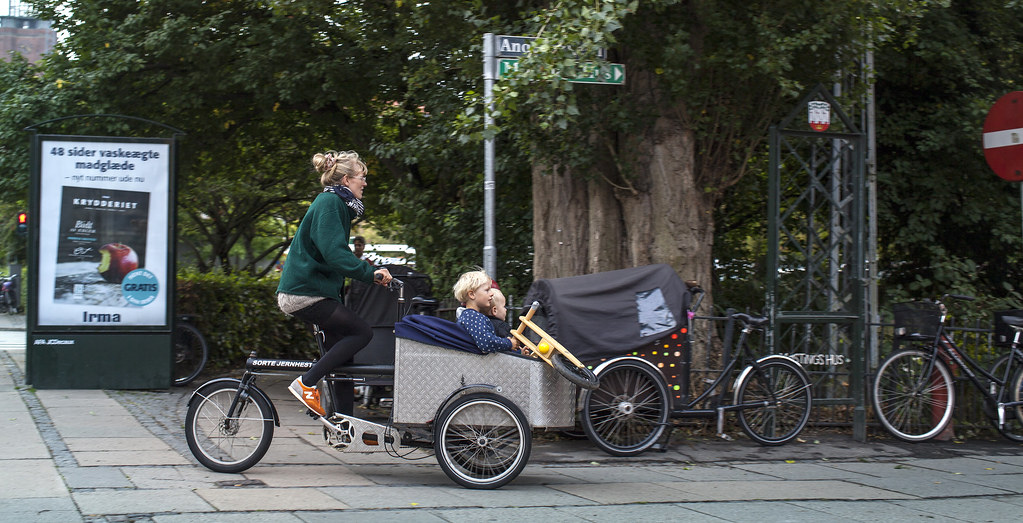
Since these bikes can be parked in much smaller spaces than cars, they reduce the need for parking spaces in the cities.
Practical Applications
E-cargo bikes are versatile vehicles that can be used for a variety of purposes. Here are some practical applications of e-cargo bikes:
For Families and Children
E-cargo bikes are perfect for families with children. They can be used to transport kids to school, daycare, or other activities. With the addition of a child seat or a canopy, e-cargo bikes can be a safe and comfortable way to transport children. They also provide an opportunity for parents to spend quality time with their kids while getting exercise and fresh air.
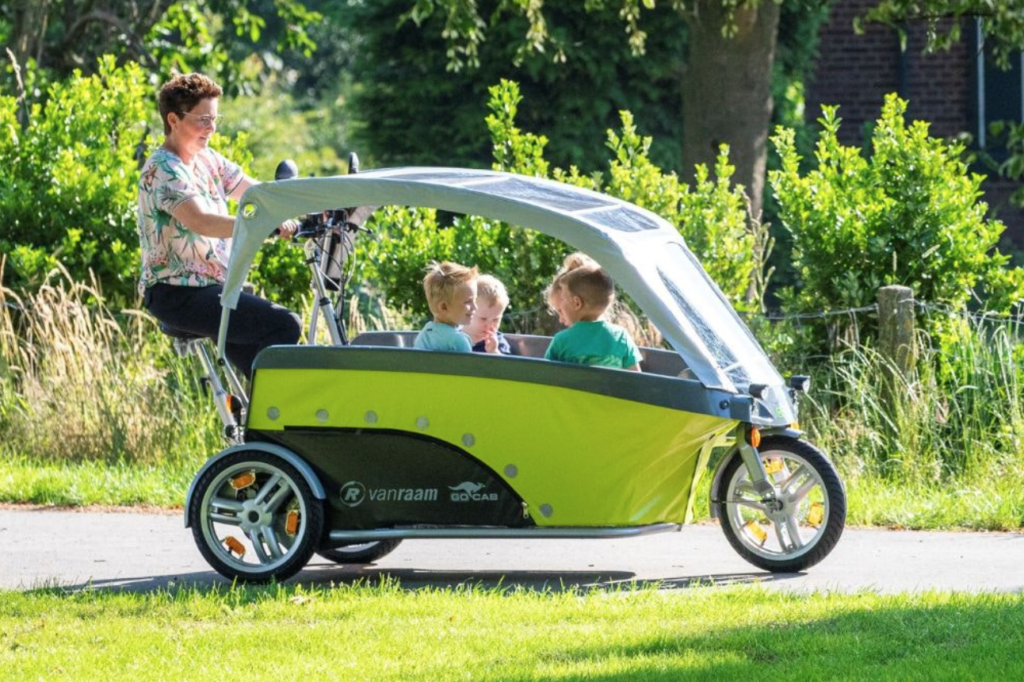
There is a special bike just for transporting multiple children. This is called the GoCab, a special electric cargo bike/cycle cab for child transport. In this bike, 8 children can be transported safely.
Business and Commercial Use
E-cargo bikes are increasingly being used for business and commercial purposes. They are ideal for delivering goods and services in urban areas where traffic congestion and parking can be a challenge. E-cargo bikes can be customized to suit specific business needs, such as carrying tools and equipment for tradespeople or transporting food and beverages for catering services.
Urban Commuting and Errands
E-cargo bikes are an excellent alternative to cars for urban commuting and running errands. They are faster than walking and can navigate through traffic more easily than cars. E-cargo bikes can carry groceries, packages, and other items, making them a convenient way to get around the city. They are also eco-friendly and cost-effective, saving money on gas and parking fees.
Shopping and Quick Commuting Trips
E-cargo bikes are perfect for shopping and quick commuting trips. They can carry groceries, clothing, and other items, making them a practical alternative to cars. E-cargo bikes are also ideal for short trips to the gym, library, or other local destinations. They provide a low-impact workout and are a fun way to explore the city.
Maintenance and Care
E-cargo bikes represent a significant investment and, like any specialized vehicle, demand proper maintenance and care for longevity and optimal performance. Unlike standard bicycles, e-cargo bikes have complex components due to their electric assist systems and the heavy-duty design needed for transporting larger loads. This complexity means that regular maintenance checks are crucial. The electrical system, including the battery, motor, and control unit, requires specialized attention to ensure it remains efficient and safe.
Additionally, the increased weight and load capacity of e-cargo bikes put greater strain on brakes, tires, and frames. Therefore, these elements need more frequent inspections and potentially more frequent replacements compared to standard bikes or even regular e-bikes. Moreover, given their unique design and functionality, certain parts of e-cargo bikes, like cargo racks or specialized gears, might need custom care or parts not commonly found in regular bike shops. Regular, skilled maintenance not only prevents costly repairs but also ensures that the bike continues to operate smoothly, safely, and reliably in its demanding role.
Case Study
Electric Elk, Chicago
Electric Elk’s journey into the world of cargo trikes is a tale of innovation and resilience, shaped significantly by the harsh winters of Chicago. The company’s founder envisioned a vehicle that could withstand Chicago’s intense weather conditions and offer a sustainable alternative to cars. The founder, an engineer by trade and a mechanic by hobby, was motivated to create a vehicle suitable for all-year-round use in the city’s unpredictable climate.
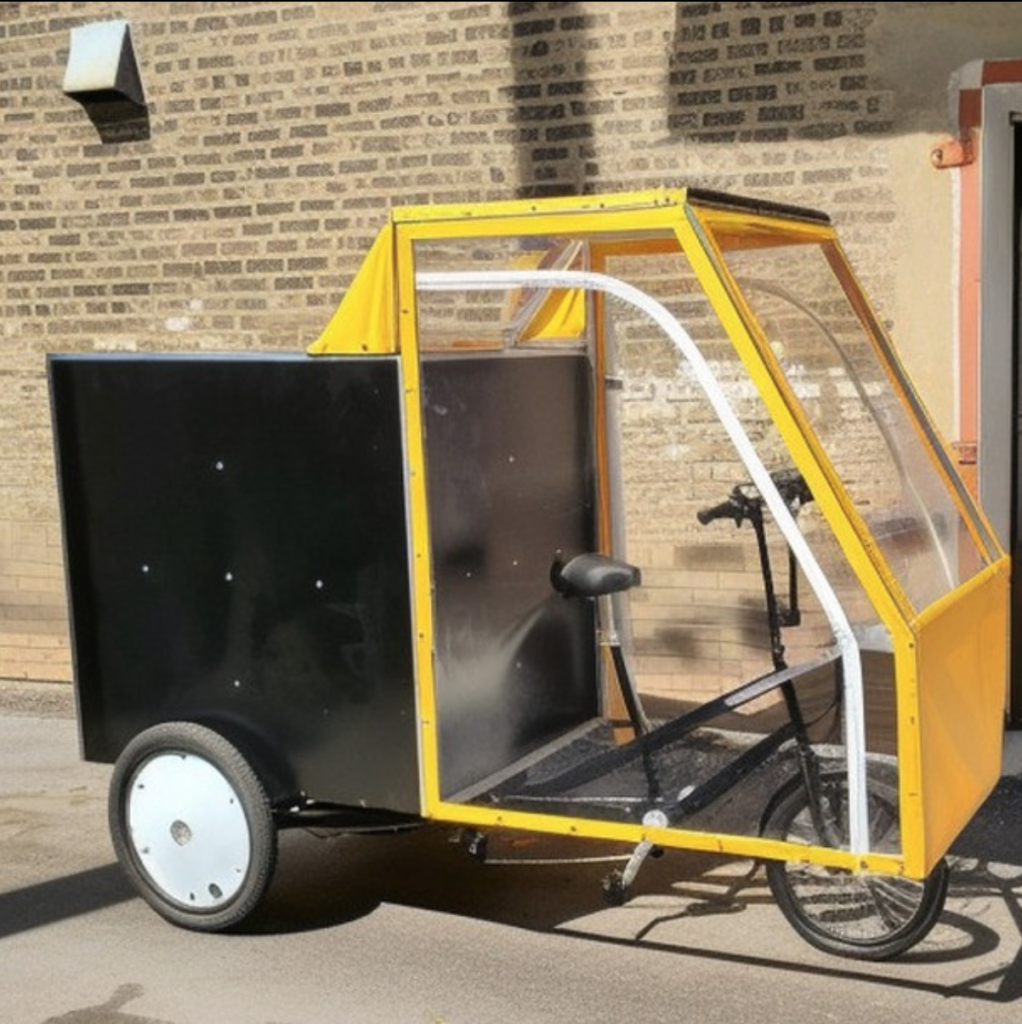
This inspiration led to the creation of the Electric Elk, a cargo trike with a cabin that allows it to be ridden in any weather, providing a practical solution for carrying groceries, pets, or other items.
The Electric Elk A133 stands out with its boxy appearance, featuring a windshield and roof built into an aluminum frame. Equipped with a powerful 1000W motor, this cargo trike is designed for both efficiency and durability. The name ‘Electric Elk’ follows a unique naming convention, combining an ‘E’ for ‘electric’ and the imagery of an elk, symbolizing steady, purposeful movement.
Despite being a relative newcomer, Electric Elk has garnered attention and interest from locals in Chicago, with Grant even exploring a limited production run. His vision extends beyond just creating a profitable product; he aims to contribute to a larger movement towards sustainable transportation and increased infrastructure for bikes and micro-mobility.

